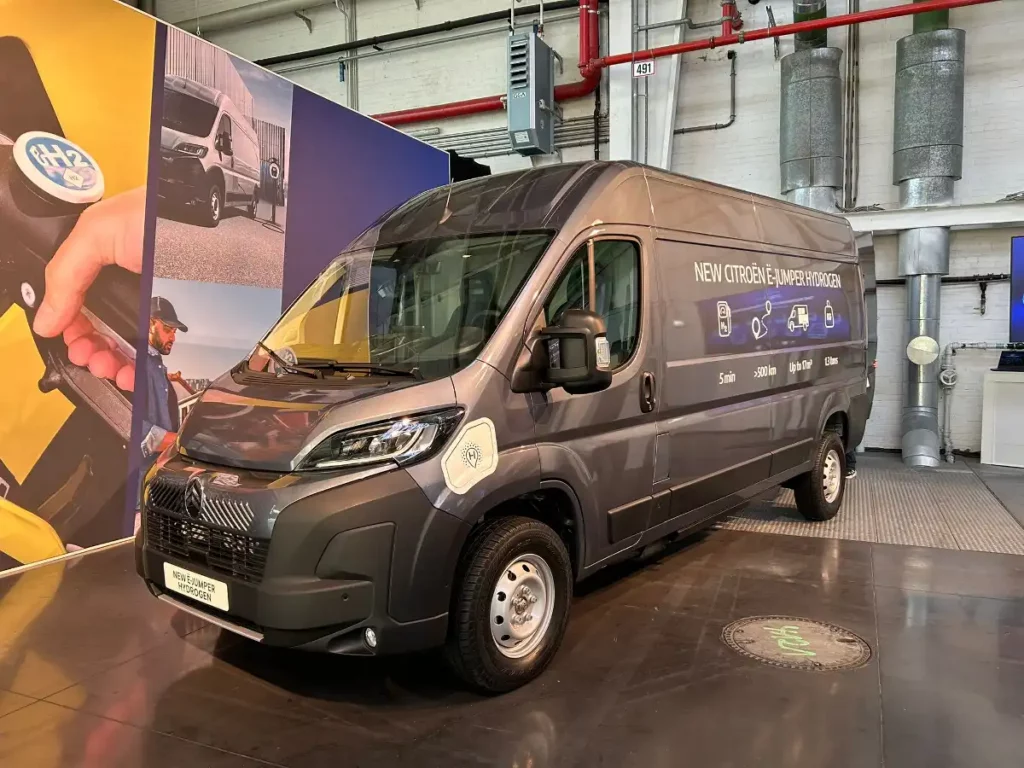
Stellantis ProOne was created towards the end of last year to symbolise the unification of the many Stellantis brands that now exist under its commercial vehicle umbrella. Citroen, Fiat, Peugeot and Vauxhall brands are now all built off shared platforms producing an unparalleled number of vehicles. With small, medium, and large models from four brands as well as internal combustion engine (ICE) and electric powertrains, there’s 24 individual models. Now, all of them which have been refreshed in some way, simultaneously in an unprecedented renewal of their light commercial vehicle line-up.
But the models aren’t just limited to battery electric vehicles (BEV) and diesel (and some petrol) engine models. Stellantis has also been working on incorporating hydrogen fuel cells into its van range with a mid-sized van available in France and Germany since 2022. Built as a manual conversion, off the production line, the medium-size hydrogen (built as the Vauxhall Vivaro-e Hydrogen) has enjoyed a degree of commercial success but has helped inform the production of an additional model on the large van platform chassis. Due to payload and range compromises for large BEV vans, hydrogen makes considerably more sense, increasing range, reducing “refilling” time compared to EVs and maintaining payload – all while being zero emission. Despite a slow proliferation of hydrogen filling stations across Europe, a European Commission roadmap to create refuelling points within 200km of each other across the entire network of major EU roads will enable hydrogen vans to become viable for many more customers.
However, creating a hydrogen vehicle using an existing platform is not a straightforward process. Renault-owned Hyvia has opted to install its hydrogen tanks on the roof for its first-generation van in an effort to become first to market with a large fuel cell LCV. While the next generation Renault Master (deliveries for which will begin later this year) will enable hydrogen fuel tanks to be incorporated into the chassis, Stellantis have managed to modify the configuration of their mid-sized van’s fuel cell system into the larger model thanks to its renowned ability to work for conversions – largely in the campervan segment.
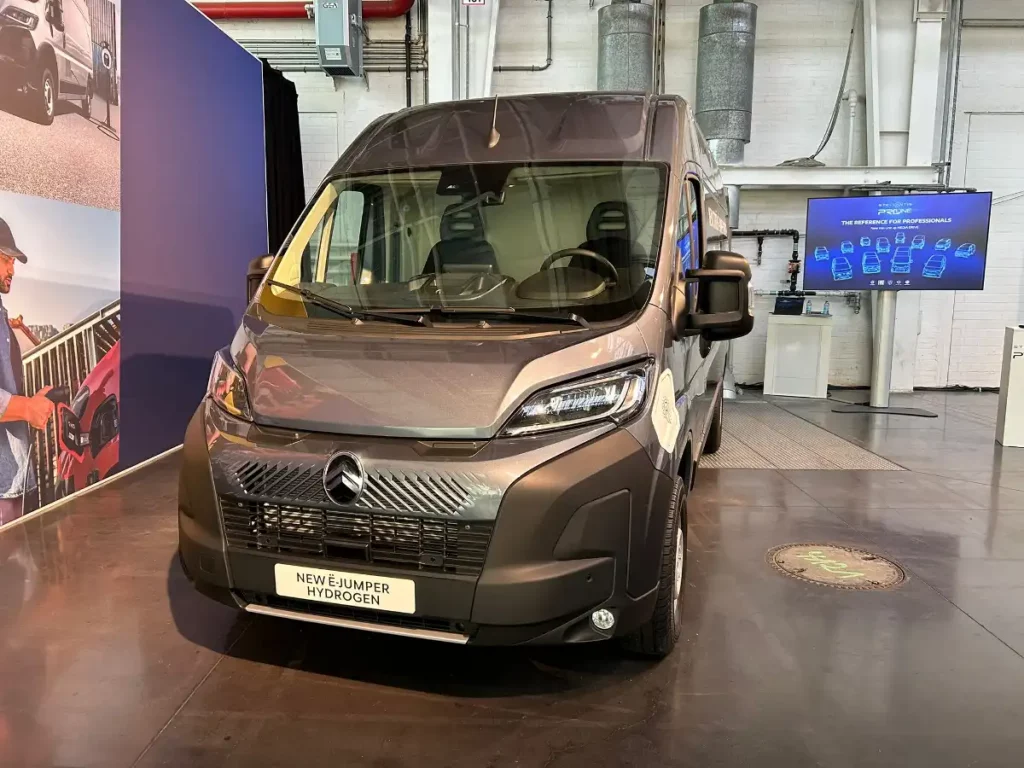
“The installation of the fuel cell system was more challenging than in the mid-sized van,” explains Stellantis hydrogen programme chief engineer, Peter Gross.
“The large van in terms of interior to exterior dimension is best in class, there’s’ nearly no empty packaging space left, so that is why the package looks quite different to the medium-sized van,” he explains.
While both medium and large vans are based on their BEV siblings. The large hydrogen vans will be available using the Citroen E-Relay platform, as well as the Fiat E-Ducato, Peugeot E-Boxer and Vauxhall Movano Electric. The medium van hydrogen fuel cell is based on the Citroen E-Dispatch, Fiat E-Scudo, Peugeot E-Expert and Vauxhal Vivaro Electric, all of which used the space under the bonnet to stack the fuel cell on top of the electric motor used to drive the front wheels. Gross explains that in the larger version this didn’t work, prompting his team to look elsewhere. They opted to use the location previously utilised by the large van’s diesel tank, located under the front seat.
“Package space was found under the front seat, there is a large diesel thank that has been removed and with some modification of the sheet metal there was a chance to put the high voltage battery and the fuel cell stack into this space.”
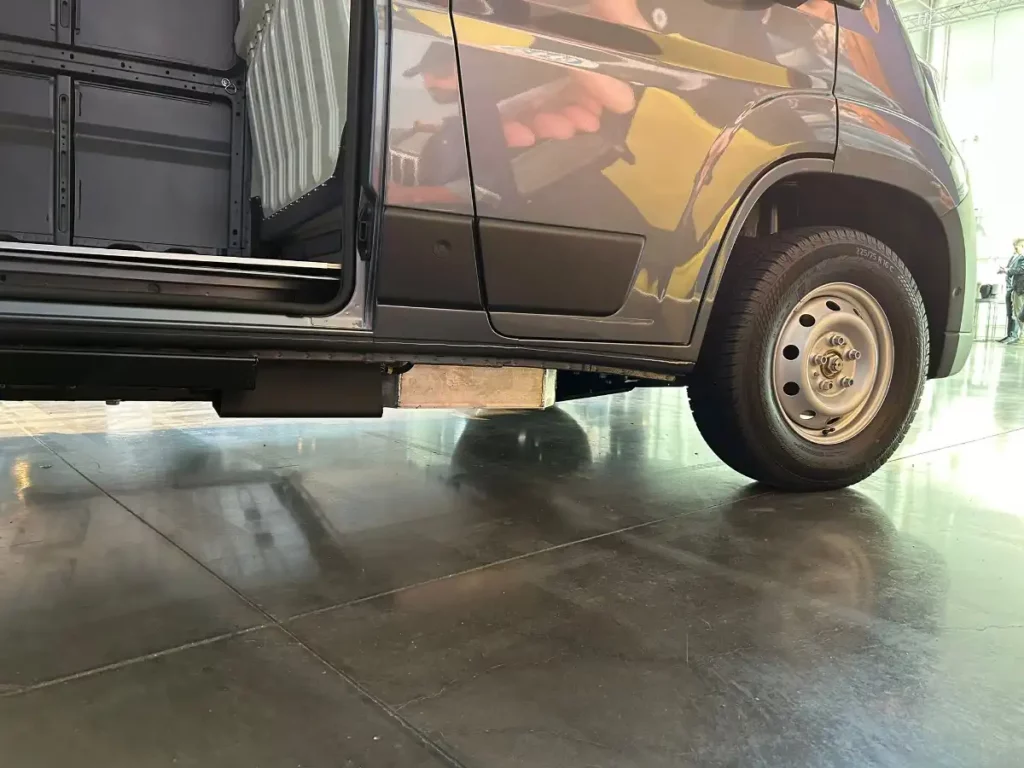
The new location has mean that the air filter now sits in the front of a van, feeding air to a cathode just behind it that is linked by pipework to the fuel cell under the seats. Hydrogen is then fed into the fuel cell from the tanks located in the rear of the van between the chassis rails. Power is then either used for propulsion or stored in the battery underneath the fuel cell. Apart from the layout, there’s also one other significant difference between the medium and large vans.
“In the mid-sized van the battery was actually in the interior of the vehicle, but in the large van it’s in the floor with the other [components],” Gross explains. The result is an easier and more logical installation that, unlike the medium-sized van, will enable the large hydrogen van to come as a right-hand-drive van as early as next year. Unfortunately, the same isn’t true of the mid-sized van. Despite Stellantis launching the van more than a year ago and having moderate success in France and Germany – two countries with a relatively established network for hydrogen refuelling – it is only now just being rolled out to additional markets. The Netherlands, Belgium and other countries in western Europe all feature on the product plan, however, the UK will not for this generation of vehicle. Gross says that it will take a few years for the medium van to be available in right hand drive with a fuel cell, which will be for the next generation of van.
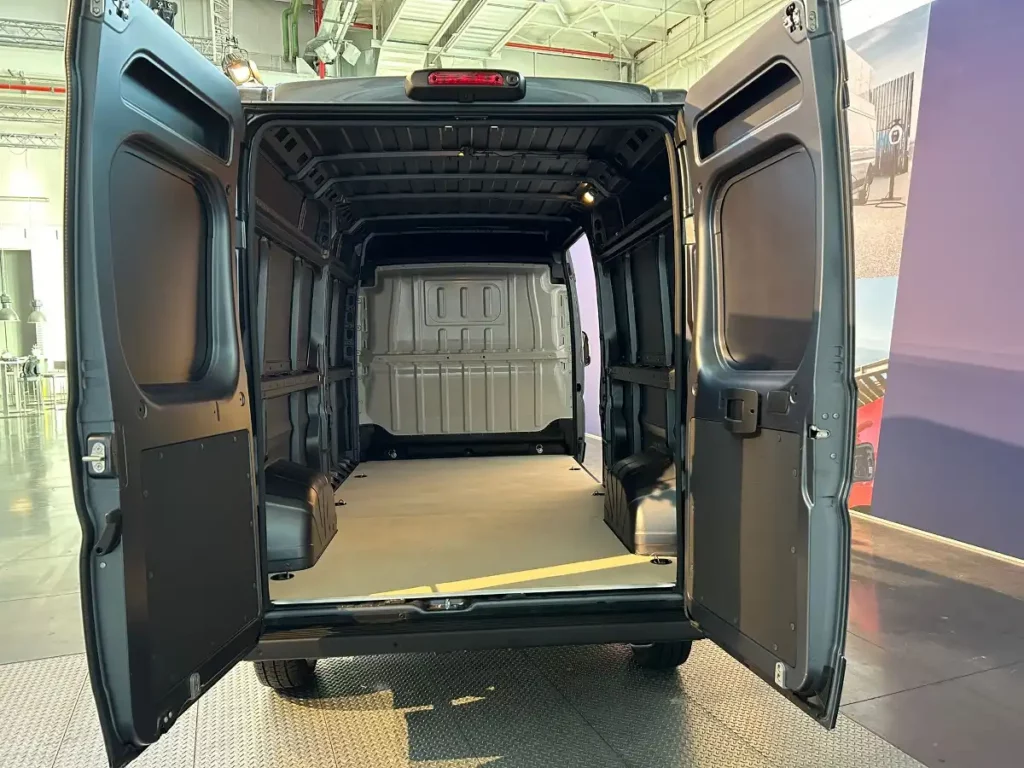
On the other hand, the large van was “considered from the very beginning” according to Gross due to our well-developed home delivery and courier services. While the UK doesn’t have a public infrastructure capable of supporting private use of hydrogen fuel cell vehicles, Stellantis is clearly expecting some private businesses to invest.
“It’s well known that the UK is very open to alternative fuels and the fuel cell proposition,” Gross explains.
“The medium van, will not come as right hand drive in the next few years. It will come with the next generation. Physical constraints are always an issue if you take an existing vehicle and want to install fuel cell components you have to live with certain restrictions,” he adds.
Despite no right-hand-drive hydrogen medium vans, Gross says they’re growing in popularity. They’ll also greater visibility later this year when being used as passenger vehicles around Paris during the Olympics.
“The market demand is growing, and it’s important to have these products available to give customers options. There is no other OEM offering mid-size and large hydrogen vans. With the European Highway, the door will be open to use these vehicles all over Europe,” Gross says referring to the EU’s hydrogen road map.
With hydrogen uptake and infrastructure being such a chicken and egg scenario, building a viable product is the best solution manufactures can have. That’s why Gross says considerable effort was made to ensure that as much hydrogen was able to be carried as possible. The addition of a fourth tank, compared to the medium van’s three, makes the large van a much more usable prospect for the fleets that are likely to be the primary buyers. That capacity, however, was only possible due to the large van’s innate ability carry payload. Luca Marengo, Stellantis commercial vehicles head of global product, attributes that to the van’s design and long standing success as a converted vehicle.
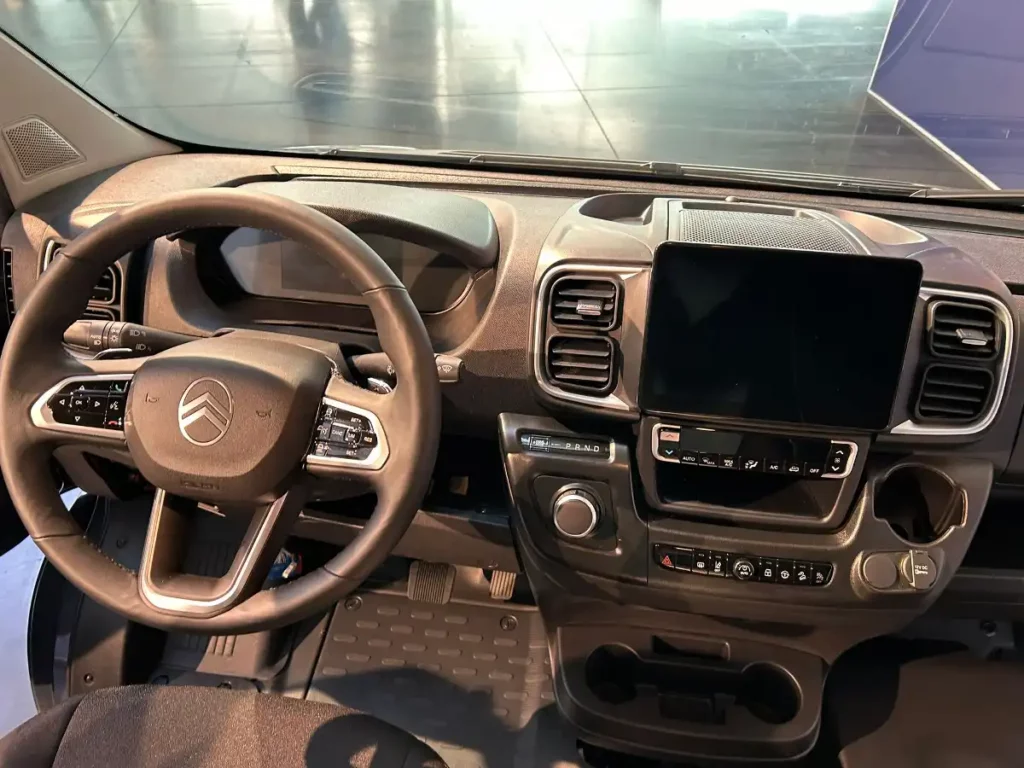
“The Ducato and these [large Stellantis] vans have always been popular with conversions, particularly motorhomes. Storing clean and waste water is something they have always done. That has helped with the space in the chassis for the hydrogen,” Marengo explains.
Ultimately the market will decide how much of a success hydrogen vans will become, but with large vans and fleet customers, they stand a fighting chance. The scalability of the design will also help with a powertrain used across medium and large vans, there’s hope that like electric motors and modular battery packs, volumes will reduce the price and bring hydrogen to the mass market.